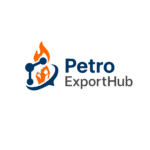
SN150 Base Oil Specifications: What Buyers Need to Know
When buyers in the lubricants and petrochemicals sector look for reliable raw materials, SN150 base oil consistently appears at the top of their sourcing lists. This light neutral base oil is a Group I product, widely used in automotive and industrial lubricants because of its balance of performance, price, and global availability.
For international buyers, knowing the SN150 base oil specifications, applications, and market factors is essential to make informed purchasing decisions. This article explores everything buyers need to know, from physical properties to supply considerations, with special focus on SN150 base oil price, quality standards, and global trade dynamics.
1. What is SN150 Base Oil?
SN150 stands for Solvent Neutral 150.
It is a light viscosity base oil produced by refining crude oil through solvent extraction and dewaxing.
Classified under API Group I, meaning it has less than 90% saturates and/or more than 0.03% sulfur.
It serves as a versatile feedstock for finished lubricants, transformer oils, and process oils.
2. Key Specifications of SN150 Base Oil
Here are the standard technical specifications of SN150 base oil that buyers typically request in tenders or contracts:
| Property | Typical Range | Importance for Buyers |
|---|---|---|
| Viscosity @ 100°C (cSt) | 5.0 – 6.0 | Impacts film strength and flow in lubricants |
| Viscosity Index (VI) | 95 – 105 | Determines stability across temperature changes |
| Pour Point (°C) | -6 to -9 | Critical for cold weather applications |
| Flash Point (°C) | 200 – 220 | Safety in handling and storage |
| Sulfur Content (%) | ≤ 0.03 – 0.05 | Environmental compliance and performance factor |
| Color (ASTM) | 1.0 – 1.5 | Affects finished product appearance |
| Density @ 15°C (kg/m³) | 875 – 890 | Key in blending calculations |
| Neutralization Number (mg KOH/g) | ≤ 0.03 | Indicates cleanliness and oxidative stability |
Buyers should always ask for a certificate of analysis (COA) from suppliers to verify these values.
3. Why Buyers Choose SN150 Base Oil
3.1 Performance Benefits
Excellent balance between low viscosity and lubrication film strength.
Works well as a primary base stock in automotive engine oils.
Enhances blending flexibility with heavier oils like SN500 or bright stock.
3.2 Cost Advantages
SN150 price is consistently lower than Group II and Group III base oils, making it cost-effective.
Available in large volumes from producers in the Middle East, Russia, and Asia, which reduces dependency risk.
3.3 Market Availability
Exported globally through ports like Jebel Ali (UAE), Bandar Abbas (Iran), and Novorossiysk (Russia).
Accessible for buyers in South Asia, Africa, and Eastern Europe who rely heavily on imports.
4. Applications of SN150
SN150 base oil serves multiple industries:
Automotive Lubricants: Engine oils, gear oils, transmission fluids.
Industrial Lubricants: Hydraulic fluids, process oils, compressor oils.
Other Uses: Transformer oils, rubber process oils, metalworking fluids.
5. Quality Considerations for Buyers
When evaluating suppliers, buyers should focus on:
Consistency of SN150 specifications across batches.
Reliable SN150 base oil price offers (CIF/FOB).
Supplier credibility and export track record.
Compliance with REACH, ASTM, and ISO standards where applicable.
6. Global Trade & Price Trends
Middle East & Asia dominate exports due to competitive refinery capacities.
SN150 price is influenced by:
Brent crude fluctuations
Regional demand for lubricants
Logistics & freight rates
Seasonal demand (summer driving season, winter heating oils) can impact spot pricing.
| Region | Key Role in SN150 Market | Price Sensitivity |
|---|---|---|
| Middle East | Major exporter with cost advantage | Medium |
| South Asia | Largest importer (India, Pakistan) | High |
| Africa | Rapidly growing demand | High |
| Europe | Selective imports for Group I blending | Low–Medium |
Looking for Base oil suppliers in Iran ?
- Contact Us today and get connected with producers and export-ready logistics.
- sales@PetroExportHub.com

Related posts
Mono Ethylene Glycol (MEG) serves as a cornerstone for modern antifreeze and coolant formulations, offering reliable freezing protection and heat resi . . .
Explore Solvent 100’s specs, uses, and export opportunities from Iran. Ideal for paint, ink, and adhesive buyers in India, Turkey, UAE, and Africa. . . .
Explore everything you need to know about exporting sulphur from Iran in 2024 — including types, packaging, documents, ports, prices, and top import . . .
Explore Iran’s top ports for petrochemical exports, including Bandar Imam Khomeini, Assaluyeh, and Bandar Abbas. Compare infrastructure, accessibili . . .
Learn the key differences between polypropylene (PP) and polyethylene (PE), their applications, advantages, and how to choose the right polymer for yo . . .
Discover how a Turkish plastics manufacturer reduced costs by 22% through importing HDPE from Iran. Real-world case study by PetroExportHub. . . .
Learn why Iran is a leading exporter of polyethylene (PE). Discover grades, global applications, and how PetroExportHub connects buyers with top suppl . . .
We are here to answer your questions....
Petro Export Hub
PetroExportHub specializes in the export of premium-grade petrochemicals, minerals, and industrial chemicals from Iran, serving international markets with reliability, transparency, and tailored logistics solutions
Tehran Office
Phone:
0214865484 | +989127607241
Address:
Tehran..
China Office
TEL :
0211400
Address:
Zhongzhou Bie Lu, Zhongcheng Street, Yiwu City, Zhejiang Province, China
Quick Access
Quick Access
- Contact Our Sales Team
- Frequently Questions
- Shipping & Logistics
- Become a Partner
- Certificatins & Quality







